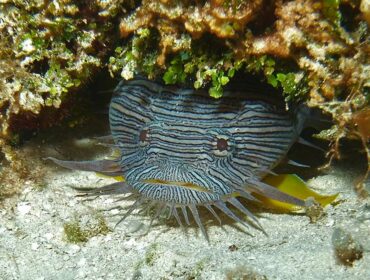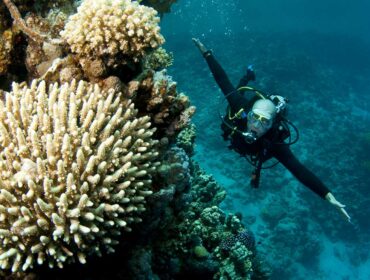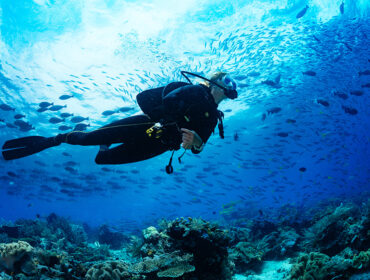Some of the best dive sites in the World have underwater currents. It’s a simple fact that currents carry in food (plankton) to an area which in turn draws fish and more fish and animals that feed on that fish and so on, making it a lively dive site to explore. However, currents can often be intimidating for divers because of their unpredictability and your natural survival instinct of fighting it. Sometimes going with the flow is hard when you are unexpectedly pushed into the fast lane without being prepared. It’s at these times it is better to have some idea as to how to deal with the situation rather than to be caught clueless and scared.
Here’s a look at some tips in dealing with underwater currents when your diving-
- Check for currents before the dive. Before getting into the water, look for current patterns on the surface itself and have the boat drop a drift line in the water to see if there are any. Usually local fisherman, boat hands and experienced dive masters who are familiar with the area can recognize the conditions from the surface.
- Take a cue from the fish. You can tell changes n currents or the appearance of one from the reef fish. Generally, small fish will all be facing up-current, unless it is so strong they are forced to take shelter. In a downcurrent, however, fish may be finning up and down and frantically in circles. If the downcurrent is particularly strong, you may even see larger fish being swept downwards.
- Descend down an anchor line when there’s a prevalent current at a particular dive site. Avoid free descents. Remember not to let go of the line until you reach the bottom or desired depth and make sure your dive buddy is ready too.
- If you’re in for a current dive, it’s best to make it a drift dive if possible. For that however, you would need to appoint a reliable surface supervisor that can spot the divers on the surface and bring the boat around for retrieval. It’s also important that you trail a surface float while you dive for the dive boat to keep track of the group and every diver should carry a safety sausage or a deploy-able high visibility buoy that can help the dive boat spot you should you separate from the group and have to surface. A whistle attached to your BCD might help as well in such a situation.
- If you know you are to dive in fast currents try not to overload yourself with too much dive gear and scuba accessories like large cameras and torches. What you may want to consider carrying instead are things like an SMB (for sure!), a buddy line to avoid separation (however it risks getting snagged), a reef hook- a great way hang around a spot to wait for other divers to catch up or just stop and watch the passing life. This blunt hook about 10cm-long is attached to a 2m long line clipped to the diver and can be snagged into a piece of dead coral or a rock crevice.
- If you’re not drift diving, always start the dive against the current, time the dive carefully and plan your turn around time depending on the speed of the current.Stay close to the reef wall or sea floor when in the same direction as the current. The current is almost always lesser at the bottom near the sea bed, so if you need to slow down or wait for the group to catch up with you, go lower and hug the bottom. If you find yourself pulled into an unexpected orientate yourself horizontally to make yourself as streamlined as possible and try to cross it diagonally by heading upstream of your destination.
- Pace your breathing and keep a close eye on your gauges. It’s easy to loose track of both your depth and air consumption when you’re riding a fast current. Be prepared to inflate or dump air quickly if you get dragged down or up. If caught in a downcurrent, try to get as close to the reef as you can and tuck yourself behind a ledge, be prepared to dump air from your BC quickly as soon as you get out to avoid ascending fast.
- Streamline, streamline, streamline. Dangly bits can be a nightmare on a fast drift dive. You will get the best from the dive if you stay as neutrally buoyant and streamlined as possible. Wear a good pair of gloves in case you have to grab on to rocks and dead coral against a current (however avoid touching anything unless absolutely necessary).
- Lastly, if you don’t have much experience don’t attempt a current dives unless with a certified dive instructor or a more experienced diver than you.



